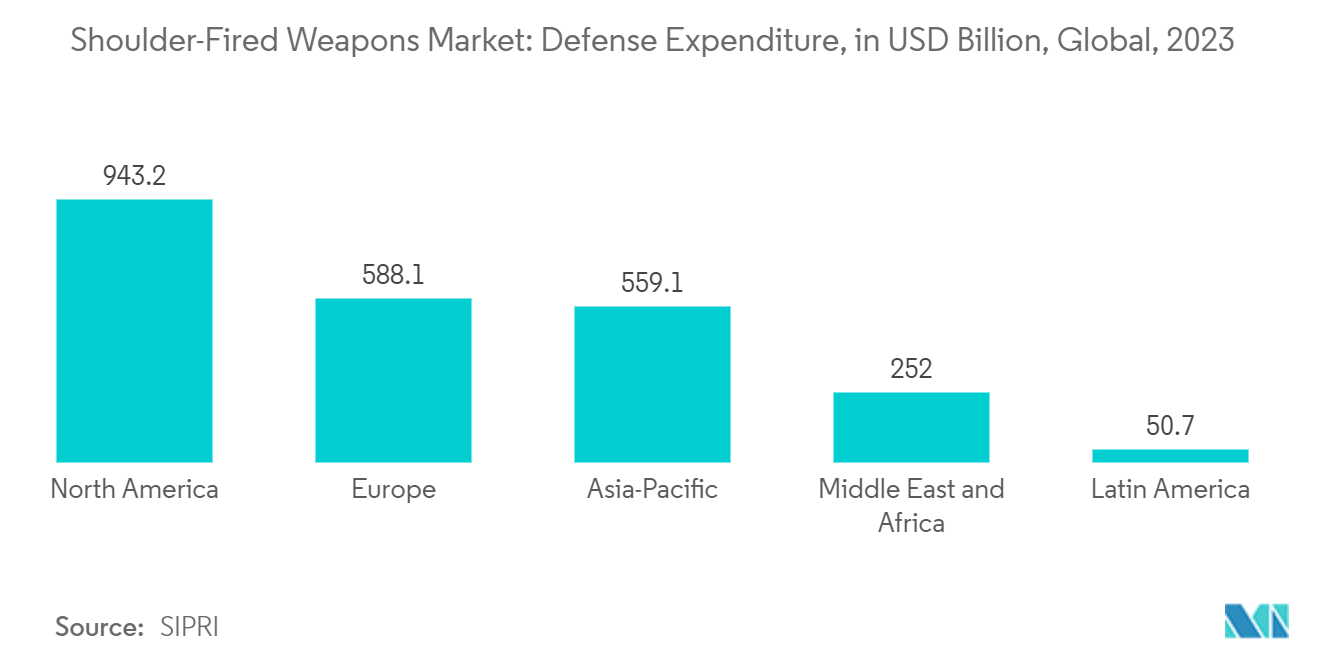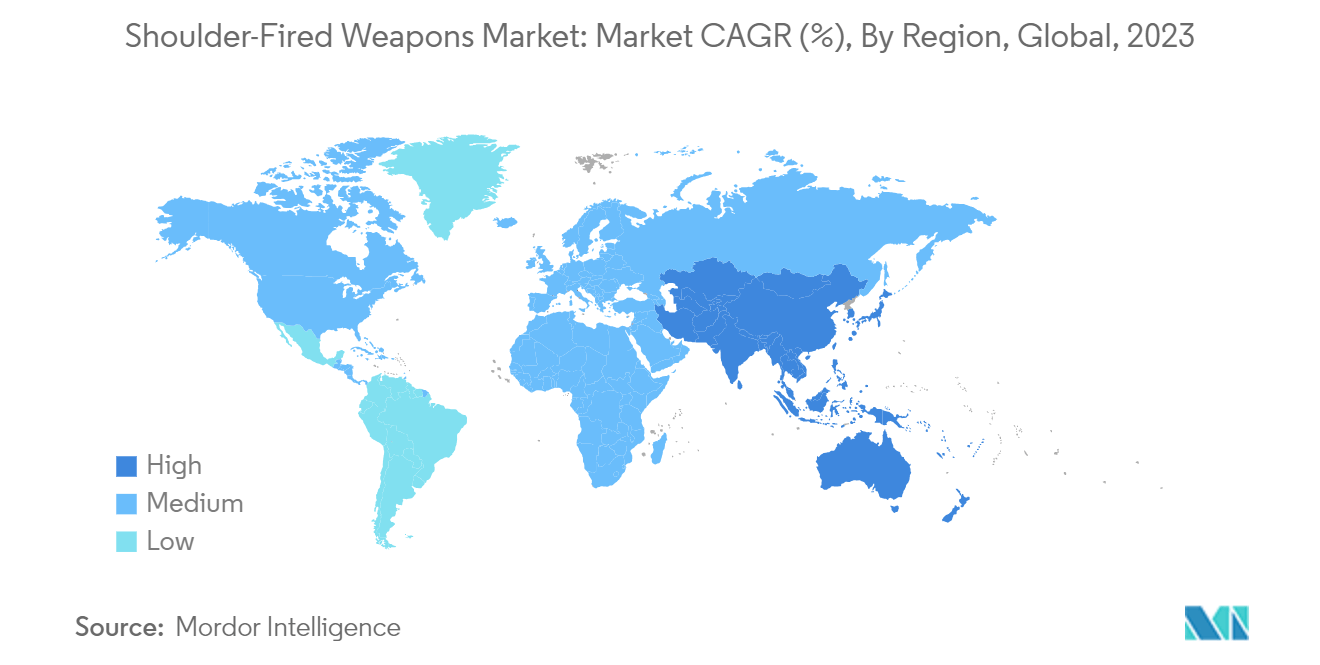Market Trends of Shoulder-fired Weapons Industry
Guided Technology Projected to Witness the Highest Market Growth During the Forecast Period
Guided missiles are poised to lead the growth in the shoulder-fired weapons market, driven by technological advancements and increased defense spending. These missiles are becoming more effective owing to ongoing enhancements in precision and range. Many nations are bolstering their infantry arsenals with lightweight, easily deployable systems. Notably, global defense spending reached USD 2.4 trillion in 2023, with a significant share allocated to advanced missile systems.
Contracts in 2023 underscored the rising prominence of guided missiles. In September, the US Department of Defense granted RTX Corporation a USD 110 million contract for its Javelin missiles, showcasing their relevance in modern warfare. Simultaneously, Saab AB secured a USD 104 million deal to supply the US Army with AT4 and Carl-Gustaf munitions, including guided variants. These contracts highlight the increasing focus on cutting-edge shoulder-fired missile systems. Furthermore, in December 2022, the UK Ministry of Defence's procurement of the NLAW system totaled USD 76 million, underscoring the ongoing trend of outfitting armed forces with advanced guided missile technology.

Asia-Pacific to Witness the Highest Market Growth During the Forecast Period
Asia-Pacific boasts some of the world's largest arms importers, with notable players including India, China, Pakistan, and South Korea. Both China and India have seen consistent upticks in their defense budgets. Nations like China, India, Japan, and South Korea are rapidly ramping up their defense expenditures, aiming to modernize their armed forces and bolster their capabilities. For instance, China's defense budget registered a steady annual growth of 6-7%, culminating in a substantial USD 230 billion in 2023. This heightened spending was primarily motivated by the imperatives of bolstering national security and asserting regional dominance, especially in the face of escalating geopolitical tensions.
Asia-Pacific is rife with geopolitical tensions and potential conflict scenarios, which are major drivers of increased defense spending. Key flashpoints include territorial disputes in the South China Sea, the Taiwan Strait, and the India-Pakistan border. These tensions are further exacerbated by the escalating military buildups and strategic rivalries, notably between China and the United States.
Consequently, regional countries are intensifying their military preparedness and capabilities to address these security challenges, leading to heightened procurement and modernization endeavors. These geopolitical intricacies play a pivotal role in shaping the anticipated growth of the defense market. For instance, in April 2024, the Indian Army unveiled indigenous projects valued at over USD 827 million, focusing on the development of Very Short Range Air Defence (VSHORAD) systems. These systems, comprising shoulder-fired missiles, are specifically tailored to counter aerial threats along the country’s borders with China and Pakistan. The Indian Army's ambitious plans include over 500 launchers and approximately 3,000 missiles, all aimed at fortifying India's strategic defense infrastructure against aerial threats in border regions.
Rising technological prowess and a surge in international defense collaborations are further propelling the Asia-Pacific defense market. Nations are increasingly channeling investments into cutting-edge technologies like artificial intelligence, cyber warfare, and unmanned systems. Collaborative defense initiatives, such as joint military platform developments between India and Russia or defense technology transfers between the United States and Japan, are fostering innovation and bolstering the industry’s capabilities. These initiatives not only cater to the immediate security needs of the armed forces but also lay a solid foundation for the long-term growth and evolution of the defense industry in Asia-Pacific countries.


